Amphipolis Greek Tomb Discovery: Missing Sphinx Head Discovered in Third Chamber [Photos]
Greek archaeologists excavating a massive Alexander the Great-era burial mound complex at Kasta Hill, in the northern Greek region of Serres, have found one of the missing sphinx heads belonging to the two marble sphinxes guarding the entrance to the tomb.
The missing sphinx head was found under collapsed slabs of floor in the third chamber in the tomb, which has only just been excavated in the last week.
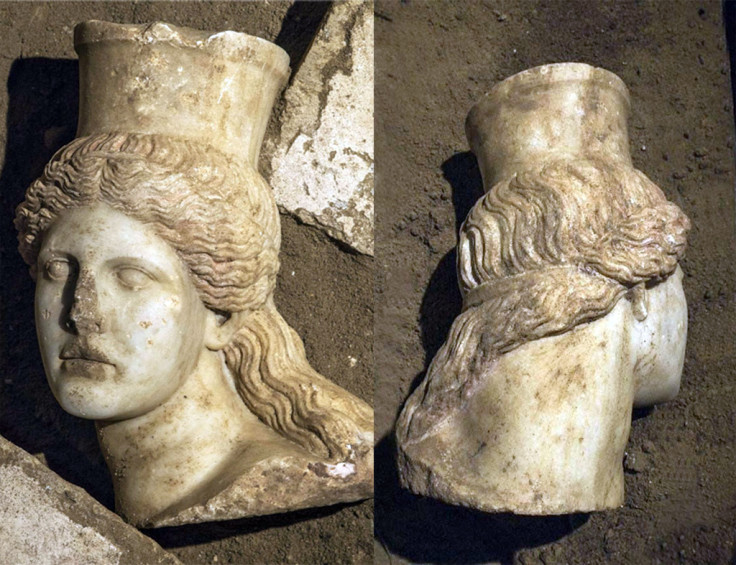
Measuring 0.6m in height, the bust is an "exceptional" piece of art that depicts a woman with long curls over her left shoulder, wearing some sort of crown on her head, according to the Greek Ministry of Culture.
There are also traces of red paint on the sphinx's hair and the archaeologists have found the discovered bust fits perfectly on the top of the right-hand-side sphinx at the tomb entrance.

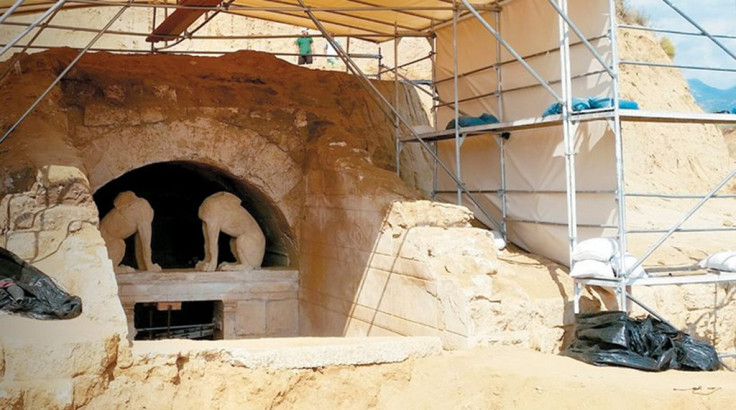
While excavating the third chamber, the archaeologists have also found the door to the fourth chamber.
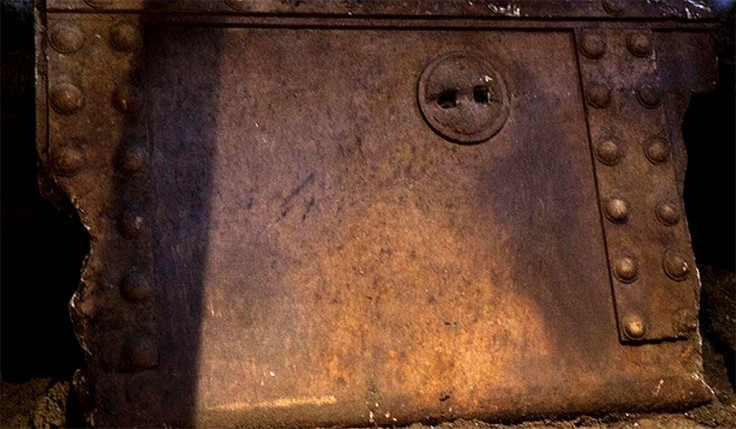
News of the discoveries is becoming more frequent since the Greek government formally announced to the world that the tomb had been discovered in Amphipolis last month, a Greek city that was founded by the Athenians in eastern Macedonia on the Strymon River in 438-437 BC.
Just last week, archaeologists uncovered a beautiful stone pebble mosaic floor in the third chamber that depicts the mythical tale of Zeus' daughter Persephone being abducted by Pluto, the god of the underworld (who used to be known as Hades), with the Greek god Hermes, in front of a chariot leading the way into the underworld.
This is the first time that a mosaic made from pebbles has been found in a funerary monument.
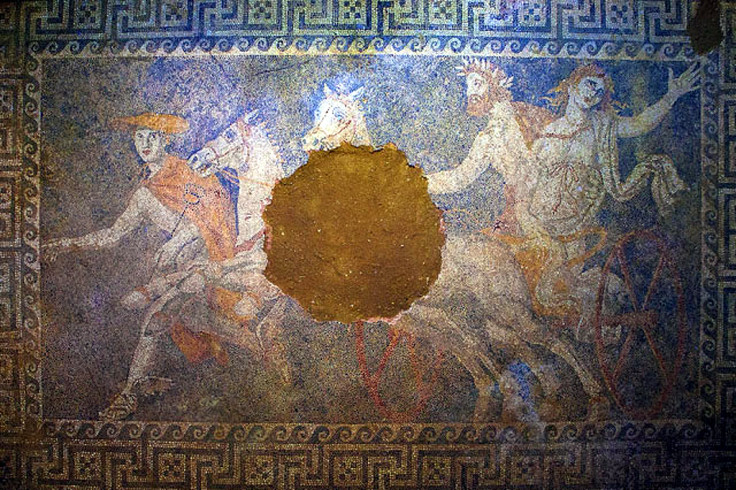
The Greek government formally announced to the world that the tomb had been discovered in Amphipolis in August, a Greek city that was founded by the Athenians in eastern Macedonia on the Strymon River in 438-437 BC.
Archaeologists took two years to excavate the burial mound on Kasta Hill to discover the entrance of the tomb, which is guarded by two sphinxes who lost their heads and wings in antiquity.
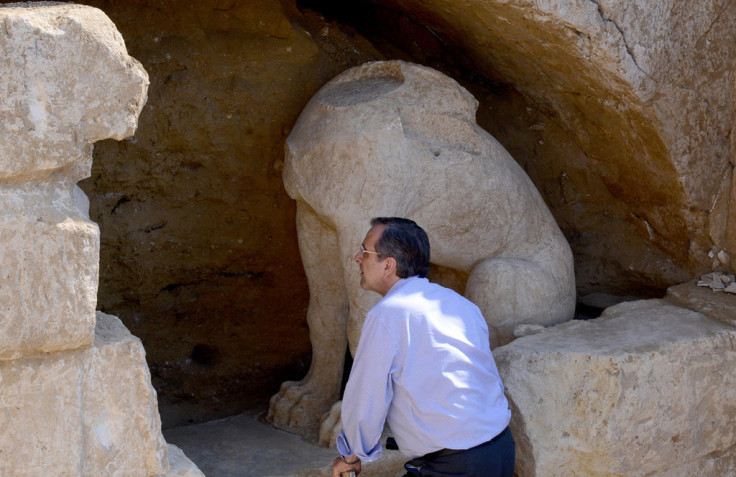
It is believed the tomb houses a very important figure from 320-300 BC, as the burial complex is ten times larger than the tomb of Alexander's father, Philip II of Macedon (read: Ancient Bones of Alexander the Great's Father King Philip II of Macedon Discovered in Northern Greece).
Greek media have repeatedly hypothesised that the tomb could belong to Alexander the Great but that is unlikely as the tomb was built after his death and his tomb is believed to be somewhere in Egypt, so current bets are on the general Laomedon, Alexander the Great's mother Olympias, or his wife Roxana.

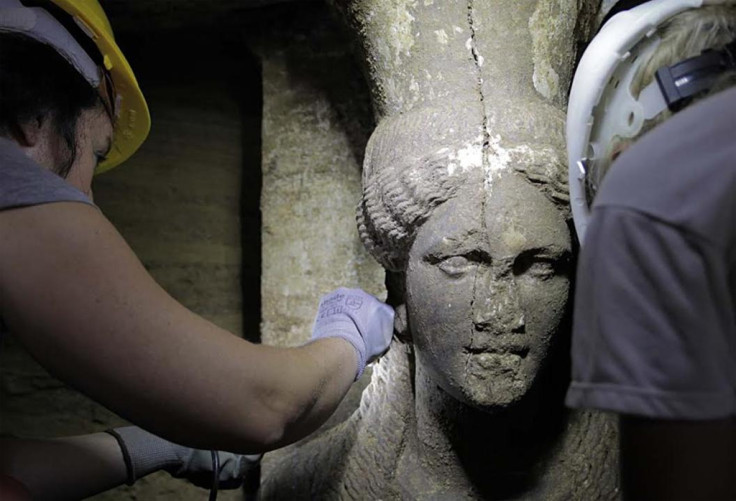
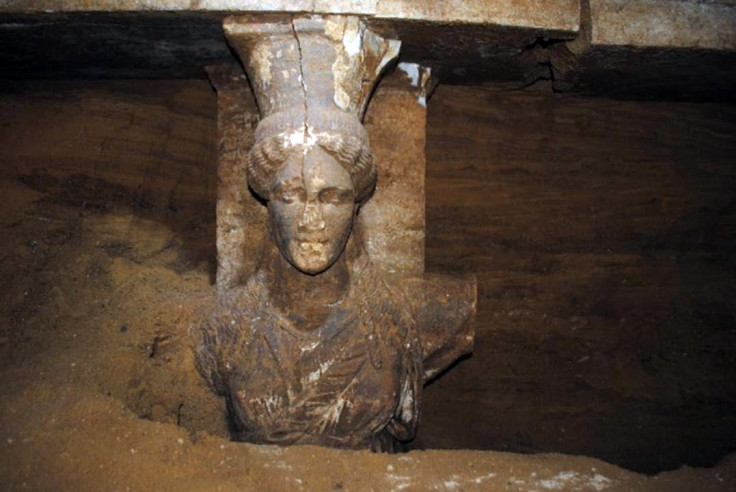
Behind the sealing wall, an antechamber and three other chambers have been discovered, and it appears the tomb was sealed by pouring sandy soil into the tomb through gaps at the top of the diaphragmatic walls of the chambers.
The archaeologists spent three weeks uncovering the caryatid statues, which stand over 7.5ft tall (see more photos), from the sandy soil, and they have had to do the same in the second chamber behind the statues.
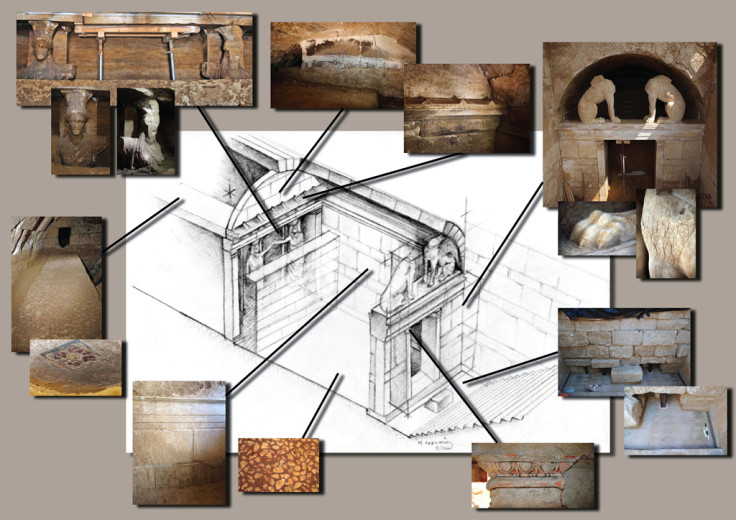

There is a hole in the middle of the mosaic floor in the shape of a circle, with a diameter measuring 0.8m, but several pieces of the damaged part of the floor have been found in the sandy soil and can hopefully be restored in time.
After uncovering the second chamber, the archaeologists discovered the marble threshold of the third chamber, which is decorated with iconic moulding and is sealed by marble door panels.
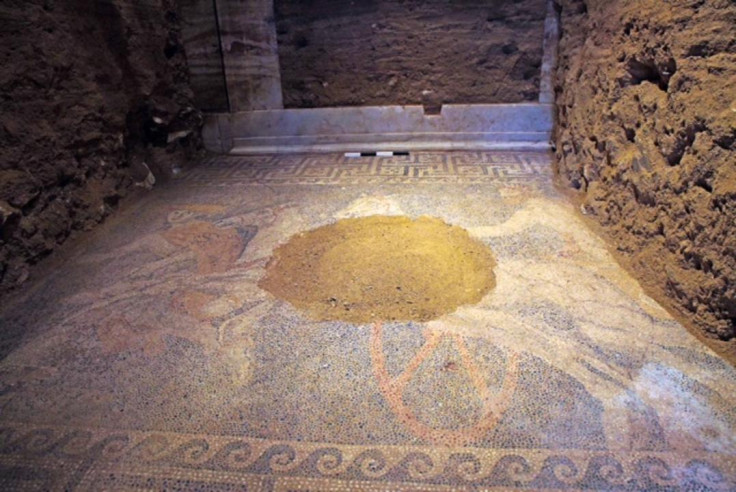
The walls of the Kasta Hill tomb are made from limestone and the archaeologists believe the walls were once painted red. The tomb's chambers are all shaped like beehives with domes at the top, a style known as "tholos".
In the antechamber, another mosaic floor made from pieces of white marble on a red background was uncovered just behind the tomb entrance at the end of August.
The burial mound measures 497m across, with a wall that is 3m high. Although it is almost a complete circle carved in marble, it is built in levels similar to the way an Egyptian pyramid is built.

A mosaic floor made from irregular pieces of white marble inlaid on a red background has been discovered in the Kasta Hill tomb in Serres, Greece.
Greek Prime Minister Antonis Samaras paid an official visit to the site in August, along with his wife and the Greek Culture Minister Constantinos Tassoulas, where the archaeologists explained their findings from a two-year excavation (see more photos).
Since the visit, Greek media has accused Samaras of using the discovery as a distraction to the political troubles facing the rather shaky new coalition government, likening Amphipolis to an "archaeological Disneyland" attracting streams of tourists.
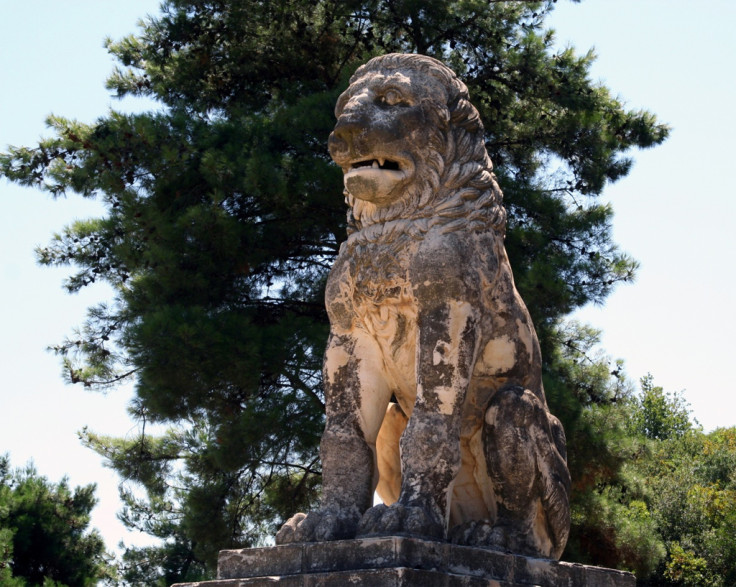
The famous Lion of Amphipolis, one of the best preserved monuments from 4th century BC, was found in 1912 by the Greek army in the river bed of the Strymónas.
Acclaimed architect Michael Lefantzis believes it once stood at the highest and most central point of the Kasta Hill mound. It now stands next to the old bridge over Strymónas river, on the street Amphipolis-Serraiki Akti.
© Copyright IBTimes 2025. All rights reserved.






















